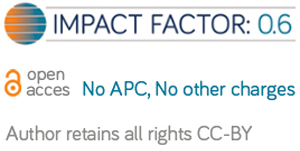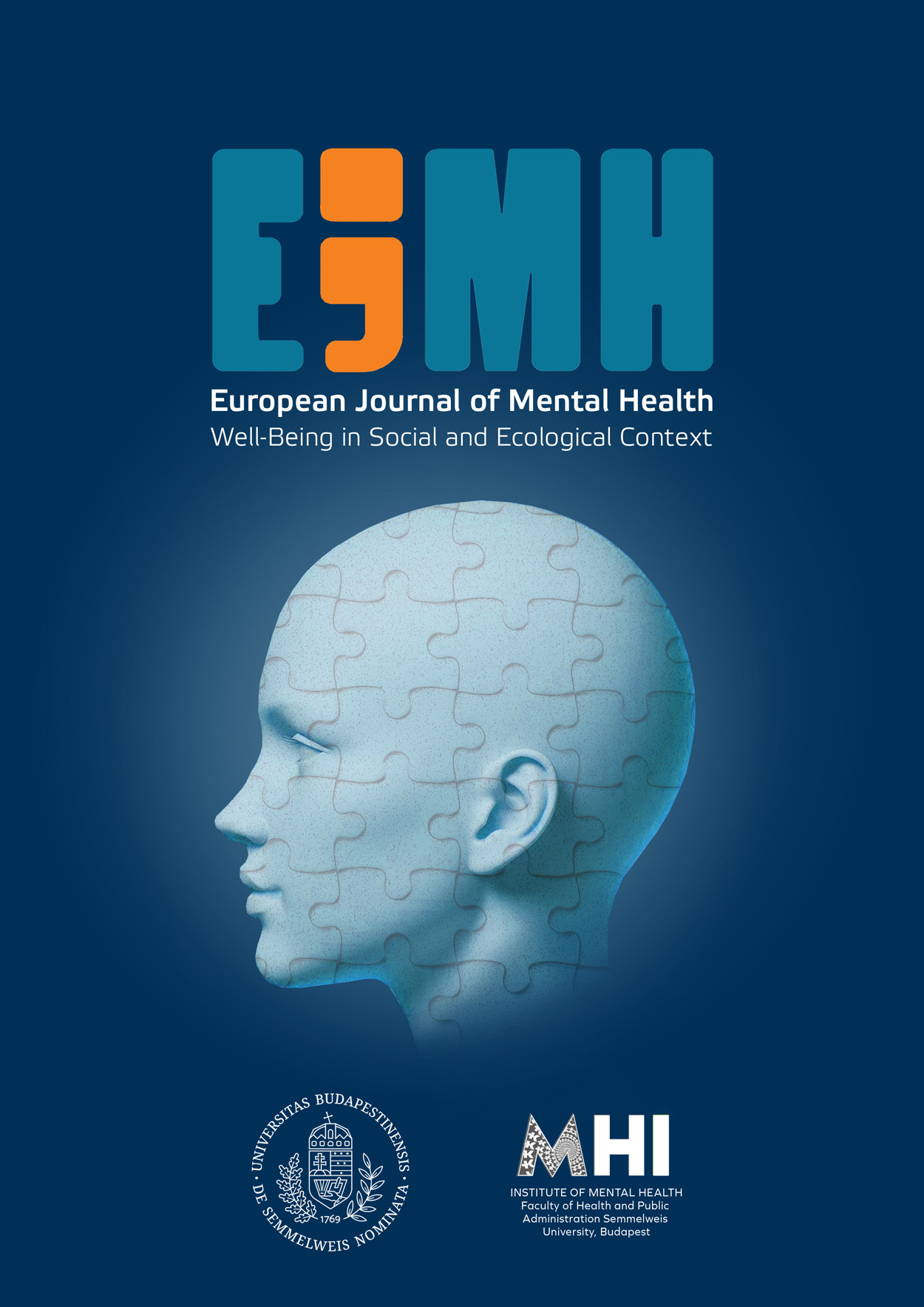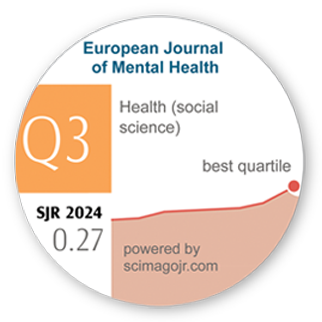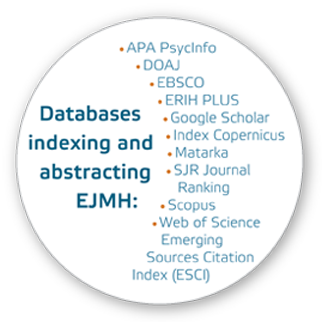Substance Use Among Lawyers and Law Students: A Scoping Review
DOI:
https://doi.org/10.5708/EJMH.19.2024.0033Keywords:
substance use, alcohol drinking, tobacco use, lawyers, legal profession, law studentsAbstract
Introduction: Lawyers are uniquely vulnerable to substance use and disorders due to the use of different substances mainly because of the demanding and adversarial nature of the legal profession. Substance use often begins during law school years.
Aims: This study aims to examine substance use and disorders due to the use of different substances.
Methods: A scoping review was adopted to collect literature from January 2000 to November 2023. The review followed the Arksey and O’Malley framework. Literature was retrieved from CINAHL Complete, PubMed, PsycINFO, Web of Science, and Scopus. A total of 1,808 studies were retrieved and 14 were included for the final synthesis. The combined sample size was 16,722, comprising 15,150 lawyers and 1,572 law students. Data was extracted into a data matrix and then synthesized into the results.
Results: Many lawyers and law students have experienced substance use disorders or problematic use. Alcohol and tobacco were the most used substances among them. Suicide due to substance use was also detected. Findings reveal the use of illicit substances, demographic disparities in substance use, and unprofessional behavior such as substance use during working hours. The role of support systems in battling substance use was critical among lawyers and law students. Even though few lawyers sought help for substance use related issues, treatment was effective.
Conclusions: Substance use is pervasive in the legal profession. Although various health promotion and education interventions have been carried out to address this problem, the scale of the problems
References
Aidam, K., & Adawudu, E. A. (2023). Prevalence and Predictors of Substance Use Among Senior High School Students: An Institution-Based Cross-Sectional Study in Ghana. Science Journal of Public Health, 11(6), 186–194.
https://doi.org/10.11648/j.sjph.20231106.11
Baldwin, J. N. (1991). Treating Drug Problems, Volume 1: A Study of the Evolution, Effectiveness, and Financing of Public and Private Drug Treatment Systems. American Journal of Health-System Pharmacy, 48(5).
https://doi.org/10.1093/ajhp/48.5.1104
Beaulieu, M., Tremblay, J., Baudry, C., Pearson, J., & Bertrand, K. (2021). A systematic review and meta-analysis of the efficacy of the long-term treatment and support of substance use disorders. Social Science and Medicine, 285, Article 114289.
https://doi.org/10.1016/j.socscimed.2021.114289
Berger, L., & Zhang, L. (2016). Substance Use and Street Violence: An Interview with Ruben Burgos, Senior Lecturer in Criminal Justice and Retired Police Lieutenant of the Milwaukee Police Department. Journal of Social Work Practice in the Addictions, 16(1–2), 222–228.
https://doi.org/10.1080/1533256X.2016.1141018
Birkeland, B., Weimand, B., Ruud, T., Maybery, D., & Vederhus, J. K. (2021). Perceived family cohesion, social support, and quality of life in patients undergoing treatment for substance use disorders compared with patients with mental and physical disorders. Addiction Science and Clinical Practice, 16, Article 44.
https://doi.org/10.1186/s13722-021-00252-8
Bogowicz, P., Ferguson, J., Gilvarry, E., Kamali, F., Kaner, E., & Newbury-Birch, D. (2018). Alcohol and other substance use among medical and law students at a UK university: a cross-sectional questionnaire survey. Postgraduate Medical Journal, 94(1109), 131–136.
https://doi.org/10.1136/postgradmedj-2017-135136
Buick, W. P. (2000). Stress and Substance Abuse Among Law Students [Dissertation]. The University of Connecticut.
Cheng, H. G., Deng, F., Xiong, W., & Phillips, M. R. (2015). Prevalence of alcohol use disorders in mainland China: A systematic review. Addiction, 110(5), 761–774.
https://doi.org/10.1111/add.12876
Chrobak-Kasprzyk, K. S., & Jośko-Ochojska, J. (2020). Assessment of risky drinking, harmful drinking and alcohol addiction among lawyers. Psychiatria Psychologia Kliniczna, 20(4), 259–266.
https://doi.org/10.15557/PIPK.2020.0032
Cornelius, M. E., Loretan, C. G., Wang, T. W., Jamal, A., & Homa, D. M. (2022). Tobacco Product Use Among Adults – United States, 2020. Morbidity and Mortality Weekly Report, 71(11), 397–405.
https://doi.org/10.15585/mmwr.mm7111a1
Coulton, S., Newbury-Birch, D., Cassidy, P., Dale, V., Deluca, P., Gilvarry, E., Godfrey, C., Heather, N., Kaner, E., Oyefeso, A., Parrott, S., Phillips, T., Shepherd, J., & Drummond, C. (2012). Screening for Alcohol Use in Criminal Justice Settings: An Exploratory Study. Alcohol and Alcoholism, 47(4), 423–427.
https://doi.org/10.1093/alcalc/ags048
Degenhardt, L., Charlson, F., Ferrari, A., Santomauro, D., Erskine, H., Mantilla-Herrara, A., Whiteford, H., Leung, J., Naghavi, M., Griswold, M., Rehm, J., Hall, W., Sartorius, B., Scott, J., Vollset, S. E., Knudsen, A. K., Haro, J. M., Patton, G., Kopec, J., … Vos, T. (2018). The global burden of disease attributable to alcohol and drug use in 195 countries and territories, 1990–2016: a systematic analysis for the Global Burden of Disease Study 2016. The Lancet Psychiatry, 5(12), 987–1012.
https://doi.org/10.1016/S2215-0366(18)30337-7
Erdős, Á. (2023). Coffee, Energy Drinks Consumption and Caffeine Use Disorder Among Law Enforcement College Students in Hungary. European Journal of Mental Health, 18, e0008.
https://doi.org/10.5708/EJMH.18.2023.0008
Gray, M. K., & Brown, K. L. (2009). Drinking and drug use by college students: Comparing criminal justice majors and non-majors. Journal of Criminal Justice, 37(3), 234–240.
https://doi.org/10.1016/J.JCRIMJUS.2009.04.003
Gupta, S., Mishra, P., Nagarajappa, S., Kumar, S., & Lalani, A. (2019). Prevalence of Tobacco and associated risk factors among university law students in Indore City. Indian Journal of Dental Research, 30(1), 10–14.
https://pubmed.ncbi.nlm.nih.gov/30900649/
Htet, H., Saw, Y. M., Saw, T. N., Htun, N. M. M., Mon, K. L., Cho, S. M., Thike, T., Khine, A. T., Kariya, T., Yamamoto, E., & Hamajima, N. (2020). Prevalence of alcohol consumption and its risk factors among university students: A cross-sectional study across six universities in Myanmar. PLoS ONE, 15(2), e0229329.
https://doi.org/10.1371/journal.pone.0229329
Krill, P. R., Johnson, R., & Albert, L. (2016). The Prevalence of Substance Use and Other Mental Health Concerns among American Attorneys. Journal of Addiction Medicine, 10(1), 46–52.
https://doi.org/10.1097/ADM.0000000000000182
Leignel, S., Schuster, J.-P., Hoertel, N., Poulain, X., & Limosin, F. (2014). Mental health and substance use among self-employed lawyers and pharmacists. Occupational Medicine, 64(3), 166–171.
https://doi.org/10.1093/occmed/kqt173
Lookatch, S. J., Wimberly, A. S., & McKay, J. R. (2019). Effects of social support and 12-Step involvement on recovery among people in continuing care for cocaine dependence. Substance Use & Misuse, 54(13), 2144–2155.
https://doi.org/10.1080/10826084.2019.1638406
López, G., Orchowski, L. M., Reddy, M. K., Nargiso, J., & Johnson, J. E. (2021). A review of research-supported group treatments for drug use disorders. Substance Abuse Treatment, Prevention, and Policy, 16, Article 51.
https://doi.org/10.1186/s13011-021-00371-0
Lorant, V., Nicaise, P., Soto, V. E., & D’Hoore, W. (2013). Alcohol drinking among college students: College responsibility for personal troubles. BMC Public Health, 13, Article 615.
https://doi.org/10.1186/1471-2458-13-615
Murdoch, L. L. (2004). Psychological distress and substance abuse in law students: The role of moral orientation and interpersonal style. Simon Fraser University.
Murray, C. J., Aravkin, A. Y., Zheng, P., Abbafati, C., Abbas, K. M., Abbasi-Kangevari, M., ... & Borzouei, S. (2020). Global burden of 87 risk factors in 204 countries and territories, 1990–2019: a systematic analysis for the Global Burden of Disease Study 2019. The Lancet, 396(10258), 1223–1249.
https://doi.org/10.1016/s0140-6736(20)30752-2
Nilan, K., McKeever, T. M., McNeill, A., Raw, M., & Murray, R. L. (2019). Prevalence of tobacco use in healthcare workers: A systematic review and meta-analysis. PLoS ONE, 14(7), 1–26.
https://doi.org/10.1371/journal.pone.0220168
Organ, J. M., Jaffe, D. B., & Bender, K. M. (2016). Suffering in Silence: The Survey of Law Student Well-Being and the Reluctance of Law Students to Seek Help for Substance Use and Mental Health Concerns. Journal of Legal Education, 66(1), 116–156.
https://jle.aals.org/home/vol66/iss1/13/
Peters, M. D. J., Godfrey, C. M., Khalil, H., McInerney, P., Parker, D., & Soares, C. B. (2015). Guidance for conducting systematic scoping reviews. International Journal of Evidence-Based Healthcare, 13(3), 141–146.
https://doi.org/10.1097/XEB.0000000000000050
Polcin, D. L., & Korcha, R. (2017). Social Support Influences on Substance Abuse Outcomes Among Sober Living House Residents with Low and Moderate Psychiatric Severity. Journal of Alcohol and Drug Education, 61(1), 51–70.
Reed, K., Bornstein, B. H., Jeon, A. B., & Wylie, L. E. (2016). Problem signs in law school: Fostering attorney well-being early in professional training. International Journal of Law and Psychiatry, 47, 148–156.
https://doi.org/10.1016/j.ijlp.2016.02.019
Rosky, C. J., Roberts, R. L., Hanley, A. W., & Garland, E. L. (2022). Mindful Lawyering: a Pilot Study on Mindfulness Training for Law Students. Mindfulness, 13, 2347–2356.
https://doi.org/10.1007/S12671-022-01965-W
Rothstein, L. (2008). Law students and lawyers with mental health and substance abuse problems: Protecting the public and the individual. University of Pittsburgh Law Review, 69(3), 531–566.
https://doi.org/10.5195/LAWREVIEW.2008.106
Seear, K. (2017). The emerging role of lawyers as addiction ‘quasi-experts’. International Journal of Drug Policy, 44, 183–191.
https://doi.org/10.1016/j.drugpo.2017.05.008
Seear, K. (2023). Making addicts: critical reflections on agency and responsibility from lawyers and decision makers. Psychiatry, Psychology and Law, 30(1), 33–50.
https://doi.org/10.1080/13218719.2022.2112099
Shaw, D., McCluskey, K., Linden, W., & Goodall, C. (2012). Reducing the harmful effects of alcohol misuse: The ethics of sobriety testing in criminal justice. Journal of Medical Ethics, 38(11), 669–671.
https://doi.org/10.1136/medethics-2011-100304
Shore, E. R. (2001). Relationships between drinking and type of practice among U.S. female and male attorneys. Journal of Social Psychology, 141(5), 650–659.
https://doi.org/10.1080/00224540109600578
Stack, S., & Bowman, B. A. (2023). Suicide among lawyers: Role of job problems. Suicide and Life-Threatening Behavior, 53(2), 312–319.
https://doi.org/10.1111/sltb.12945
Stern, C., Lizarondo, L., Carrier, J., Godfrey, C., Rieger, K., Salmond, S., Apostolo, J., Kirkpatrick, P., & Loveday, H. (2020). Methodological guidance for the conduct of mixed methods systematic reviews. JBI Evidence Synthesis, 18(10), 2108–2118.
https://doi.org/10.11124/JBISRIR-D-19-00169
Sweeney, T. J., Myers, D. P., & Molea, J. (2004). Treatment for Attorneys with Substance Related and Co-Occurring Psychiatric Disorders: Demographics and Outcomes. Journal of Addictive Diseases, 23(1), 55–64.
https://doi.org/10.1300/J069v23n01_05
Tricco, A. C., Lillie, E., Zarin, W., O'Brien, K. K., Colquhoun, H., Levac, D., ... & Straus, S. E. (2018). PRISMA extension for scoping reviews (PRISMA-ScR): checklist and explanation. Annals of Internal Medicine, 169(7), 467–473.
https://doi.org/10.7326/M18-0850
World Health Organization. (2021). WHO Global Report on trends in the prevalence of tobacco use 2000-2025 (4th ed.).
https://www.who.int/publications/i/item/9789240039322
World Health Organization. (2023). International classification of diseases for mortality and morbidity statistics (11th Revision).
https://www.who.int/standards/classifications/classification-of-diseases
World Health Organization. (2024). Global status report on alcohol and health and treatment of substance use disorder.
https://www.who.int/publications/i/item/9789240096745
Wild, T. C., Newton-Taylor, B., Ogborne, A. C., Mann, R., Erickson, P., & MacDonald, S. (2001). Attitudes Toward Compulsory Substance Abuse Treatment: A comparison of the public, conselors, probationers and judges’ views. Drugs: Education, Prevention and Policy, 8(1), 33–45.
https://doi.org/10.1080/09687630124249
Wyler, H., Maisch, A., Berger, T., Kieser, U., Schleifer, R., & Liebrenz, M. (2022). Alcohol use disorder and disability insurance in Switzerland: the attitudes and views of lawyers, insurance medical experts, and addiction-specialist therapists. Substance Abuse Treatment, Prevention, and Policy, 17, Article 69.
https://doi.org/10.1186/s13011-022-00495-x






